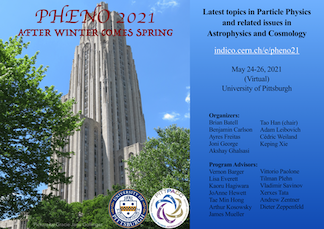Speaker
Description
We show that a minimal local B−L symmetry extension of the standard model can provide a unified description of both neutrino mass and dark matter. In our model, B−L breaking is responsible for neutrino masses via the seesaw mechanism, whereas the real part of the B−L breaking Higgs field (called σ here) plays the role of a freeze-in dark matter candidate for a wide parameter range. Since the σ-particle is unstable, for it to qualify as dark matter, its lifetime must be longer than 1025 seconds implying that the B−L gauge coupling must be very small. This in turn implies that the dark matter relic density must arise from the freeze-in mechanism. The dark matter lifetime bound combined with dark matter relic density gives a lower bound on the B−L gauge boson mass in terms of the dark matter mass. We point out parameter domains where the dark matter mass can be both in the keV to MeV range as well as in the PeV range. We discuss ways to test some parameter ranges of this scenario in collider experiments. Finally, we show that if instead of B−L, we consider the extra U(1) generator to be −4I3R+3(B−L), the basic phenomenology remains unaltered and for certain gauge coupling ranges, the model can be embedded into a five dimensional SO(10) grand unified theory.
